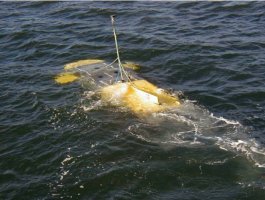Applications Products Services Support About EuroSim

|
Home
Contact
News
Applications Products Services Support About EuroSim |

|
|
|

Objective The objective of the Autonomous Underwater Vehicle Simulator is to represent an underwater environment for testing Autonomous Underwater Vehicle (AUV) control functionality and mission scripts. When the full simulator is developed, prior to deploying a real vehicle on a mission, the mission plan or script will be downloaded to its virtual clone in the simulator. The virtual vehicle can then be monitored as it executes the mission. Introducing physical obstacles into the environment and forcing failure of various vehicle components can test the robustness and reliability of the vehicle's sensors and control architecture and of the script.Context AUVs are small and highly maneuverable vehicles. AUVs are now being built for industrial use and reliability is becoming increasingly important. The paradox is that AUVs are made more 'intelligent' or adaptable for reliable operation in dynamic and unstructured environments, their behaviour gets less predictable.

|